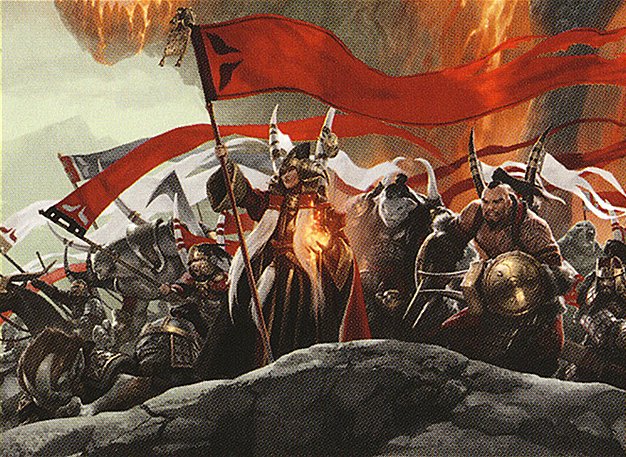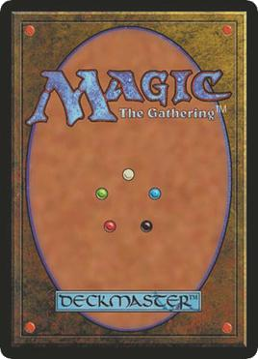 Art by Jason Chan
Art by Jason ChanCloned from The Commander Cube 2023
Hello and welcome to The Commander Cube. Here we’ll discuss how to enjoy this Commander Legends inspired draft to its fullest.
QUICK OVERVIEWHOW TO DRAFT
- Draft three 20-card packs
- Two legends per pack
- Draft two cards per pack with every pick.
- 60-card decks
- Follow the color identity rules of the chosen Commander(s)
- All other rules apply (40 life, commander damage)
- Each player will start with a Command Tower, a Commander's Sphere and two copies of the The Prismatic Piper in their card pool.
- When building the deck, you're going to want to play about 25 lands in your 60-card deck.
TIPS FOR EACH FORMAT
- 6-8 players: Draft and split into 2 games.
- 4-5 players: Draft and play 1 game.
- 3 or fewer players: Play sealed.
- ... Or if you prefer to play sealed, that's always fine too of course.
- 6 packs is the ideal number for sealed. If you want a higher powered sealed environment you can go up to 8.
ARCHETYPES

 : Flyers / Blink
: Flyers / Blink
 :Control / Graveyard
:Control / Graveyard
 : Aristocrats (Sacrifice)
: Aristocrats (Sacrifice)
 : Monsters
: Monsters
 : +1/+1 Counters
: +1/+1 Counters
 : Tokens
: Tokens
 : Elves / Graveyard
: Elves / Graveyard
 : Ramp
: Ramp
 : Wizards / Spell Matters
: Wizards / Spell Matters
 : Voltron (Auras / Equipments)
: Voltron (Auras / Equipments)
First things first, the most important thing to keep in mind is that you should have fun with this draft format. So if some of our suggestions don’t seem as fun as something you’d do feel free to ignore them.
What we’ll try to do is to help you get a better understanding of the format. That can be crucial, since you might not get many chances to draft Commander Legends. This way you’ll have a better experience – both drafting and playing.
We’ll talk about:
- How The Commander Cube draft actually works.
- How should your pick order change.
- What are the major archetypes.
Even when you sit down to draft, you’ll notice some changes. The packs will be thicker than usual. Why’s that? Because they contain 20 cards each. Each player gets 3 packs per draft.
So with three 20-card packs, each player will draft 60 cards instead of the usual 45. Drafting that many cards in addition to playing Commander-like games, could take quite a while. So to make everything run faster, each player picks two cards with each pick.
Also since, you get so many cards and to get at least some variety of the Commander format, your deck size is 60.
How do Commanders Work in The Commander Cube Draft?Commanders will work the same way as they do in the Commander format. Your Commander will start in the Command Zone and all cards in your deck will have to follow your Commander’s color identity.
Since there’s a partner mechanic in this set, you can have two commanders if they both have partner.
What if I didn’t Draft a Commander?
There are more than 130 commanders in this cube. So it would be pretty unlikely that you’d end up without a Commander for your deck.
Although unlikely, it could still happen. That’s why each player has in their card pool two copies of The Prismatic Piper.
You know, how you can add any numbers of basic lands to your draft deck, even if you didn’t draft them. Well, Piper works kinda the same. You can use it as one of your partner commanders. You can also use two of them as both of your partner commanders.
The idea is that you should never have to worry that you’ll stay without your commander. Let’s say you drafted a blue-green deck, but only got a blue partner legend. In that case you can use Piper as a green partner legend.
Note, that Piper is a very weak card, so playing it should be your last resort and not something you’re actively looking to do.
How Many Players for a Commander Draft?The ideal number for a draft is 8 players. The format is optimized for a 4 player game, so you can make two four player pods and then switch.
However, there’s no wrong way to play. You can also play 1 versus 1, like you would in a regular draft. You can also go crazy with an eight player free-for-all. In that case, prepare for a long game, that can be quite boring for the players who get knocked out early on.
Finally, your starting life total is 40, and Commander damage rule does apply. (If a player is dealt 21 or more points of damage by a single Commander, that player loses the game.) Once again, if you’re playing at home you can change those rules to fit your playgroup.
How to Draft The Commander Cube – RecapSo let’s quickly recap everything you need to know about how to draft this set:
- You draft 3 booster packs of 20 cards each.
- You pick two cards with each pick.
- Your deck size is 60.
- One of the legendary creatures that you draft is your Commander and will start in the Command Zone. (You can have two Commanders if both have partner).
- All cards in your deck have to follow your Commander’s color identity.
- If you don’t have appropriate Commander you can use The Prismatic Piper.
- Usually you’ll play a game in a 4-person pod.
- Staring life is 40.
- Commander damage rule does apply.
How Many Lands to Play?
Finally, let’s talk about how many lands you should play in this format. In a regular, 40-card draft deck you’d usually play 17 lands. If you’d like to keep the same ration, that would give you 25.5 lands.
However, in the The Commander Cube draft you’ll always have access to your commanders, which gives you something to do with your mana. That means you really don’t want to be mana screwed, so you’ll probably want to play 26-27 lands plus some additional mana fixing.
The Commander Cube Draft – Pick OrderAs we said, this is not your regular draft format, so this won’t be your regular pick order. A usual pick order would be useless here, as card strength will mostly vary depending on what your chosen commander is doing.
So, we’ll talk about some general pick decision and when you should pick certain cards.
1. Pick Commanders HighlyCommander will be incredibly important here, as one would expect. You will get to play your commander every single game. (Unless you’re stuck on lands, of course.) That’s why it’s incredibly important that you get access to as many of them as you can.
By picking Commanders early, you can easily move into different colors, depending on what’s getting passed to you.
Still, there are some cards that you’d pick over a good Commander, something like Arcane Signet or Chromatic Lantern, those are very powerful in just about any deck you’ll play.
2. Force or Stay Open?This step already depends on the previous one. Which kind of commander did you get in your first pick? Something insanely strong? In that case you should try and force that color.
Forcing the Color
Let’s say in your first pick you got something powerful like Tevesh Szat, Doom of Fools. At this point you basically want to lock in black color.
What that means is, that you’ll play black no matter what kind of black cards are getting passed to you. You only need to find one color that your neighbors aren’t drafting and you’ll do fine, as you’ll get the access to a very powerful planeswalker every game.
However, if your Commander is strong, but in two or three colors, you can still force those colors, but maybe less so and try to remain more open.
But if your Commander is of medium power level, you should just stay open.
Staying Open
So if you’re newer to the game, and don’t know all the jargon, let me explain. In draft you’re staying open, when you don’t commit to your color immediately after your first few picks. Instead, you pick the best cards in each booster regardless of their color.
You can usually do this until picks 8-12 in the first booster. The risk is that you might end up with some cards that you won’t get to play. The reward is that you can get good cards (in the colors your opponents aren’t drafting) pretty late.
3. Pick Good Fixing and Mana SmoothingIn this draft format, you’ll always be able to count on your Commander (or two of them, if they have partner). This means you’ll always have something to do with your mana. So you want to avoid being unable to cast your Commander because of your mana issues.
Remember that, in order to make things a little easier, you will start with a Command Tower and a Commander's Sphere in your card pool, but thankfully, there’s plenty of mana fixing available for every deck in the Cube:
Arcane Signet is an amazing card and it won’t be any different in The Commander Cube Draft. It certainly deserves to be a very high pick, as you’ll play it in every deck you draft.
Chromatic Lantern is another card that you should pick as soon as possible. Not only because it gives you one more mana, but because fix all your lands instantly.
Even though it’s slower, Burnished Hart is still a great card to have. Not only does it ramp you, it’s also a creature, which offers you various uses in this format.
There’s also various other cards, Bonder's Ornament is specially good, fixing your mana and being a good mana sink in the late game drawing some cards. Prophetic Prism replaces itself and fixes your mana, so you’d happily play it in almost every deck.
You also have the Diamond cycle, to improve your mana. These cards are slow, because they enter tapped, but they have a slow cost.
Wayfarer's Bauble is a good option, too, but it’s still a two for one. Getting a land onto the battlefield instead of in your hand will be always relevant.
Green Ramp
As one would expect, there’s also plenty of ramp and fixing in green. Just at common and uncommon you have:
- Birds of Paradise
- Sylvan Caryatid
- Paradise Druid
- Sakura-Tribe Elder
- Farhaven Elf
- Fertilid
- Fydhorn Elves and similars
- Dryad of the Ilysian Grove
- Rampant Growth
All of this suggests that green will be very strong in this format. That’s quite fitting for a draft format based on Commander.
Best Lands
Since we’re speaking about fixing, we should mention some important lands:
- Command Tower is obviously a great option, especially being always in your card pool.
- Mana Confluence and City of Brass are similar, but with a small life cost.
- Fetchlands (Scalding Tarn and the others) are, probably, the best option, being many times a first pick because they fix your mana while staying open, and thin your deck to draw more relevant cards. These lands can search for Duals and Shocklands, so they have a big impact in your mana. Prismatic Vista, Fabled Passage or Evolving Wilds and Terramorphic Expanse will do a great job, too.
- Opal Palace ranges from fine to good, depending on your commander.
- If you’re playing tribal, Path of Ancestry can really do some work.
Now you should have good commanders, mana fixing and know your colors. There’s pretty much only smooth sailing from here on. Just pick up some interaction and cards that fit well in your chosen archetype.
Speaking of archetypes…
The Commander Cube Draft ArchetypesNow moving on – to the archetypes you can expect in The Commander Cube draft. Each color pair has its own theme, but most of them also combine well when you build a three color deck.
For example, blue-white flyers can “borrow” cards that make 1/1 flying Spirits from black-white tokens. We’ll also mention how archetypes pair with other colors when appropriate.
Blue – White: FlyingProbably the most often used draft archetype returns with blue-white flyers. Flying is always good in limited and there’s no reason for that to change.
Quite the contrary, with the presence of the monarch mechanic, evasive creatures become even more important. Either to steal the crown from the opponent or to protect yours from opposing flyers.
There are some flyers in white, but specially in blue. Besides, there are also some cards that can gain or grant flying. For example, Gryff's Boon and Cliffhaven Kitesail. This will give you options to work with.
If you’re looking for a safe option in The Commander Cube draft, blue-white flyers seem like the way to go.
Black – White: TokensBlack-White features tokens. Getting multiple creatures from one card is always great, even if those creatures aren’t that big.
However, you can easily make your tokens bigger with cards like Intangible Virtue, or with some +1/+1 counters cards that you get from white (and green if you decide to splash a color).
Thalisse, Reverent Medium can be an insanely powerful payoff for the strategy, just try to draft as many token makers as you can – and there are quite a few. Another great commander, that also works fine in your deck is Prava of the Steel Legion. It buffs your tokens, and gives you the ability to make more tokens every turn.
This archetype looks both powerful and fun to play.
Red – White: Equipment & AurasAs you can see, red-white archetype cares about auras and equipment. There are plenty of those across all the Cube, specially as colorless equipments. You can also search for the one you need with Stoneforge Mystic, Stonehewer Giant, Enlightened Tutor, Steelshaper's Gift and Open the Armory.
In general, you’ll prefer equipment over auras, as they can be used even after the creature dies. On the other hand, auras that give you an immediate effect, when they come into play (like drawing a card, giving your creature protection, etc.) are pretty good – even if your creature gets removed, you already got some value back.
If you like Voltron strategies, you should try drafting this archetype.
Green – White: +1/+1 CountersMaking your creatures bigger with +1/+1 counters is almost always useful in draft formats. That’s especially true once you have some payoffs for doing that. All three cards shown above are great for this mechanic.
Another great payoff, and a great partner for Alharu, is Slurrk, All Ingesting.
Small, Yet Strong
Some mediocre creatures can become pretty strong in a deck like this. You’ll want to get some cheap creatures with relevant combat abilities to put +1/+1 counters on. Something like Danitha Capashen, Paragon for example.
Slith Ascendant is also nice, since it has flying. Just put one or two counters on a flying creature and you built a real threat. In general token makers are all pretty good, since they usually give you multiple bodies. This way you’ll always be able to put your +1/+1 counter somewhere. You get access to more token makers, if you’re able to splash black.
All in all, green-white archetype looks like it could be pretty strong in The Commander Cube draft.
Blue – Black: Self Mill / EncoreDo you want to play an unusual deck? If so, you should try the blue-black archetype. You’ll want to mill your own cards and then utilize your graveyard for value.
Champion of Wits is a perfect card for this deck. It fuels your graveyards, plus filters your hand to play expensive Encore cards like Rakshasa Debaser later.
Araumi is a very fun commander to build around. There are so many powerful creatures in The Commander Cube draft format, that there’s surely something busted to with it. Just imagine giving encore to Grave Titan. That’s gotta be pretty sweet, right?
So if you’re looking forward to making interesting plays, this archetype can certainly provide them.
Blue – Red: WizardsIMPORTANT NOTE: As we previously said, this Cube is inspired by Commander Legends. There, the Blue – Red colors were focused on Pirates, but we wanted a more spellslinger approach for this colors, so we changed the archetype to a Wizards tribal. It was a tough decision, because Pirates have certain artifacts interaction making Treasures. These ramp you, enable sacrifice themes and play with some artifacts matters Commanders, while letting you cast cards you've exiled with your pirates. So we swapped some Pirates with Wizards, please, take that into account.
There are two tribal archetypes in The Commander Cube draft. First one, red-blue Wizards. There are many wizards in this Cube, specially at Blue. However, apart from the payoffs you see above, there are some more Wizard-matters cards:
- Talrand, Sky Summoner
- Rise from the Tides
- Guttersnipe
- Immolating Gyre
- Runechanter's Pike
As usual, the more payoffs you have, the more wizards you want to include in your deck. You can really try and draft as many Wizards as you can, if you get Adeliz, the Cinder Wind as your commander.
The other tribal deck is black-green Elves.
There are plenty of different Elf synergies to work with. Some Elves also make more Elf tokens. In addition to Imperious Perfect, there are also:
If you’ll decide to draft Elves, you’ll probably want both Miara, Thorn of the Glade and Numa, Joraga Chieftain as your commanders. They are a great representation for what the Elves archetype is trying to do – get many incremental advantages during the course of the game, that will lead to you winning the game.
So this is a great archetype if you like grindy tribal decks.
Blue – Green: RampThe main characteristic of this archetype is ramp.
Of course, there are cards that care about spells cost of 6 or higher. However, they are all pretty expensive and if you want to make them work, you’ll want to ramp.
Thankfully, there are a lot of ramp options when you’re playing green. Additionally, there are colorless ramp cards like Everflowing Chalice, Thran Dynamo or Hedron Archive at your disposal.
When you get enough ramp cards, just pick whichever expensive cards you want for your deck and you’ll probably do fine. In games when every player starts at 40 life, you’ll have enough time to deploy your big threats. This probably makes green-blue one of the best archetypes in The Commander Cube draft.
Black – Red: SacrificeThis archetype quite often appears in various draft formats. As usual you’ll want to get three types of cards:
- Fodder (worthless creatures, that didn’t cost you a whole card, like Impulsive Pilferer)
- Outlets (cards that let you sacrifice stuff for value, like Keskit, the Flesh Sculptor)
- Payoffs (cards that give you additional value, when you sacrifice stuff, like Makeshift Munitions)
You want to get a right mix of them. Once you do, you can make some pretty fun mini combos and interactions.
If you add white to the mix, you get access to many token generators, which are great sacrifice fodder.
Steal and Sac
Steal effects can also significantly improve this deck. You have Captivating Crew and it can be a real powerhouse in this deck. If you manage to get some other steal cards, like Zealous Conscripts or Molten Primordial it can totally take the game over.
The idea is that you steal the best opponent’s creature, use it to either attack or activate its ability and then sacrifice it with a sacrifice outlet for value. This way your steal effects turn into removal spells with some additional value tacked onto them.
Red – Green: Power MattersRed-green archetype is focused on big creatures and power. How high? The higher, the better.
So this archetype will mostly consist of good red and green cards and that will be it. If you’ll have Alena and Halana as your commander pair, you’ll probably want more creatures with higher power, but that’s about it. Terror of the Peaks and Warstorm Surge shine here and can finish with your opponents fast.
If you enjoy big creatures, this is the archetype for you.
CombosYes, there are some well-known combos in this cube (and some of them not so famous), if you achieve to draft and assemble them.
- Kiki-Jiki, Mirror Breaker + Zealous Conscripts
- Kiki-Jiki, Mirror Breaker + Restoration Angel
- Kiki-Jiki, Mirror Breaker + Felidar Guardian
- Captivating Crew + Thassa, Deep-Dwelling
- Emiel the Blessed + Dockside Extortionist (+ 4 artifact/enchantment)
- Temur Sabertooth + Dockside Extortionist (+ 5 artifact/enchantment)
- Kinnan, Bonder Prodigy + Basalt Monolith
- Mikaeus, the Unhallowed + Walking Ballista + any free sac outlet
- Murderous Redcap + Metallic Mimic or Renata, Called to the Hunt + any free sac outlet
- Combat Celebrant + Helm of the Host
- Kodama of the East Tree + Guildless Commons + Toggo, Goblin Weaponsmith (or any other Landfall creature making tokens)
- Alena, Kessig Trapper + Staff of Domination + Dargo, the Shipwrecker or any 5 or more power creature + Goblin Bombardment or Altar of Dementia
- Zirda, the Dawnwaker + Basalt Monolith
- The World Tree + Maskwood Nexus
- Halvar, God of Battle (the Sword of the Realms side) + Dockside Extorsionist (+ 5 artifact/enchantment) + any free sac outlet
- Ophiomancer + Divine Visitation
- Cathars' Crusade + Herd Baloth
- Jinnie Fay, Jetmir's Second + Requiem Angel + Ashnod's Altar or any free sacrifice outlet
That’s the end of our The Commander Cube Draft Guide! If you have any questions or suggestions, feel free to let us know in the comments below.
This guide was written by A. Mlakar for CardGameBase. He made a great job explaining everything really well, so I adapted the article rearranging some paragraphs and cards to adjust it to this Cube.

